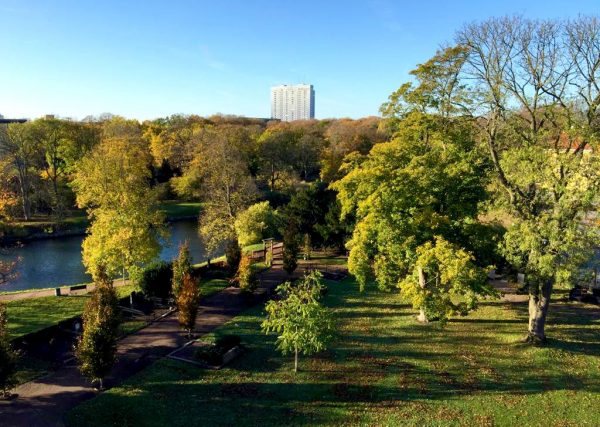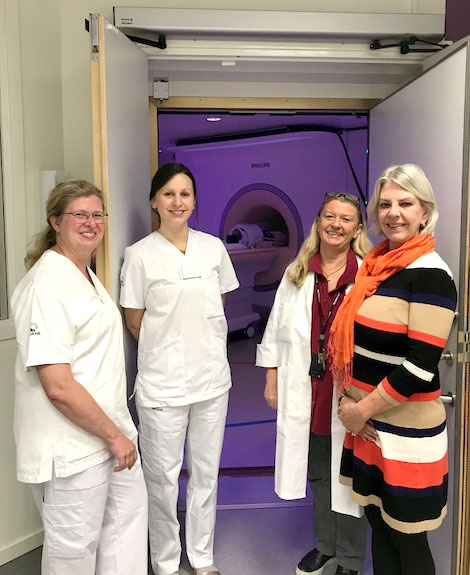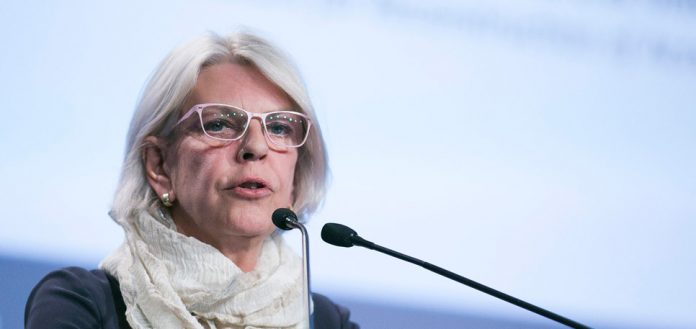A great summer has turned into an unusually sunny and warm fall, at least here in Sweden, presented in beautiful autumn colors. Winter is approaching quickly, and the many activities of the ISMRM and its affiliated section, SMRT, are keeping pace. [See Figure 1]
Our new Equity Officer, Professor Elizabeth Morris, has appointed her task force, and they are on the go, together with our Program Chair, Professor John Port, and our Vice Program Chair, Professor Doug Noll, to implement some new ideas into our next annual meeting in Montréal. The planning for the upcoming 27th ISMRM Annual Meeting (11-16 May 2019) and the 28th SMRT Annual meeting (10-13 May 2019) in Montréal, Canada, is moving along fine, with John Port and Doug Noll in total control, along with the SMRT Program Chair, Martin Sherriff. I am hopeful to add a few surprises to the program . . . however, I will keep that to myself for now.
The deadline for the submission of abstracts has passed, with over 6000 abstracts submitted. As we speak these abstracts have been assigned to our large group of excellent reviewers for review and scoring. At our annual planning committee meeting in January, after a very busy two days, the program will be final. I would like to take this opportunity to wish everyone that has submitted an abstract good luck and success for the acceptance of your work.
The search for a new Editor-in-Chief for MRM, under the leadership of Professor Greg Stanisz, is ongoing, and I can only tell you that several excellent names are on the list. I feel assured that the MRM, after Matt Bernstein, will have an equally excellent and dedicated Editor-in-Chief.
As you all are aware, inclusion and diversity are priorities in the ISMRM community. I would like to take this opportunity to address and focus on an extremely valuable group of colleagues in our Society – for both individual clinicians as well as our research community worldwide – our MR technologists/radiographers. I do not think it can be emphasized enough the value of an educated, motivated and knowledgeable radiographer or MR technologist for our daily work as a clinician, as a serious researcher and for the MR physicist. I know I do not speak only for myself when I say that my clinical work and my research would not be successful without the collaboration of dedicated and educated MR technologists/radiographers. [See Figure 2]
After talking and listening to MR technologists/radiologists as well as nurses that are SMRT members, they all point out the many values of being an SMRT member. They highlight enhanced access to educational material – free home studies as well as discounted access to annual meeting content – a strong global network and communication forum, travel grant opportunities, and, of course, the possibility to obtain CE credits for those in need. The SMRT also has a Safety Website to provide resources to the MR community as a whole, with regular monthly updates or as new information becomes available.
We all know that well educated and knowledgeable MR technologists/radiographers/nurses are more than just a person pressing buttons to get scans going. They know how different parameters will affect SNR and image quality, are able to improve our scan parameters, help us adapt to new imaging sequences and optimise scan acquisition times, thus improving efficiencies and patient throughput. They provide us with reproducible images, which is highly important in longitudinal research studies. And, of course, they are extremely knowledgeable of MR safety standards and patient care.
The SMRT and their members are important colleagues and discussion partners, and I think, as we reinforce the diversity and inclusivity in our Society, we all need to keep in mind the importance of supporting our SMRT members.
It is our duty as members of ISMRM to stress the importance of educated and knowledgeable MR technologists/radiographers to our work and continue to promote the value of being a member of the SMRT. We need to support and introduce our MR technologists/radiographers as well as nurses to SMRT, encouraging them to become members, as well as highlight the importance of the SMRT to our colleagues and department chairs.
Best late autumn wishes
Pia
 Figure 1. The view from my and my husband’s apartment balcony overlooking the old cemetery, the canal and the main central Park on an autumn day in Malmö, Sweden.
Figure 1. The view from my and my husband’s apartment balcony overlooking the old cemetery, the canal and the main central Park on an autumn day in Malmö, Sweden.
 Figure 2. My top team of MR radiographers/nurses that make my life so much easier (l. to r.: Boel Hansson, chief nurse at the 7T and a PhD student; Matea Simic, MR nurse at our 7T and our clinical research scanner, Titti Owman, research nurse, MR safety guru and immediate past president of the SMRT, and me in front of the door to our National 7T scanner).
Figure 2. My top team of MR radiographers/nurses that make my life so much easier (l. to r.: Boel Hansson, chief nurse at the 7T and a PhD student; Matea Simic, MR nurse at our 7T and our clinical research scanner, Titti Owman, research nurse, MR safety guru and immediate past president of the SMRT, and me in front of the door to our National 7T scanner).





